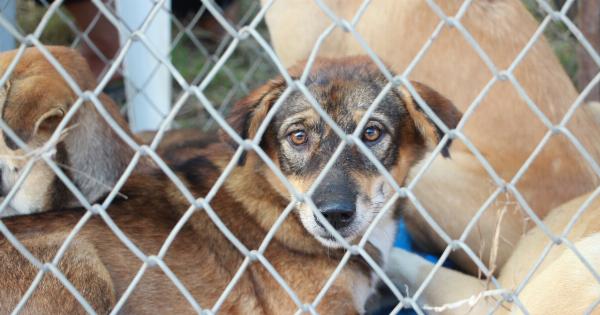Animal abuse and neglect can occur in various forms and is a grave concern in societies worldwide. Recognizing the signs of such mistreatment is crucial in providing a voice for innocent animals and ensuring their well-being.
This article aims to shed light on the different indicators of animal abuse and neglect that concerned individuals should be aware of.
1. Physical Signs
Physical signs of animal abuse can be easily visible and often include:.
- Unexplained wounds or injuries
- Burns, cuts, or bruises
- Fractured or broken bones
- Limping or difficulty in walking
- Extreme thinness or emaciation
- Patches of missing fur or signs of hair loss
- Signs of untreated medical conditions, such as infections or tumors
2. Behavioral Signs
Animals suffering from abuse or neglect often display behavioral changes or signs of distress:.
- Excessive fear or aggression towards humans or other animals
- Withdrawn or antisocial behavior
- Continuous barking, howling, or whining
- Repetitive movements or incessant pacing
- Unusual aggression or submission
- Showing signs of depression or anxiety
- Self-destructive behavior, such as excessive grooming or licking
3. Environmental Signs
Oftentimes, animal abuse and neglect are evident through the conditions in which they are kept:.
- Living in unsanitary or overcrowded conditions
- Lack of access to food, water, or proper shelter
- Exposure to extreme weather conditions without protection
- Chained or tethered for long periods with no freedom of movement
- Living in areas filled with feces, garbage, or other hazardous substances
4. Emotional Signs
Animals that have experienced abuse or neglect often exhibit signs of emotional distress:.
- Hypervigilance or constantly being on high alert
- Avoidance of eye contact or cowering in fear
- Showing signs of helplessness or learned helplessness
- Lack of response to positive stimuli
- Excessively seeking attention or affection
- Expressing fear or anxiety in certain situations
5. Signs in Specific Animals
Some animals may display unique signs of abuse or neglect based on their species or characteristics:.
5.1 Dogs
Dogs, the most common victims of abuse, may show signs such as:.
- Visible scars from physical abuse
- Aggression or fear towards particular objects or people
- Unexplained weight loss or malnutrition
- Constantly chained or confined to a small area
5.2 Cats
Cats suffering from abuse or neglect may exhibit the following signs:.
- Frequent flea or parasite infestations
- Poor coat condition and matted fur
- Refusing to eat or drink
- Living in dirty or cramped environments
5.3 Horses
Horses subjected to abuse or neglect may demonstrate these signs:.
- Malnourishment or visible ribs
- Overgrown hooves or untreated injuries
- Restricted access to food and water
- Living in cramped or filthy stables
5.4 Birds
Abused or neglected birds may exhibit the following signs:.
- Poor feather condition or feather plucking
- Being kept in small, dirty cages
- Excessive squawking or self-mutilation
- Signs of fear or aggressive behavior
6. Steps to Take if You Suspect Animal Abuse or Neglect
If you recognize any signs of animal abuse or neglect, it is crucial to take appropriate action:.
- Contact local animal welfare organizations or animal control agencies
- Document any evidence through photographs or videos
- Provide detailed information about the situation and location
- Do not intervene or confront the suspected abuser directly
- Follow up with the authorities to ensure the case is being addressed
Conclusion
Recognizing the signs of animal abuse and neglect is vital in preventing further harm to innocent creatures.
By being aware of the physical, behavioral, environmental, and emotional indicators of mistreatment, concerned individuals can play an active role in rescuing and advocating for animals in need.































